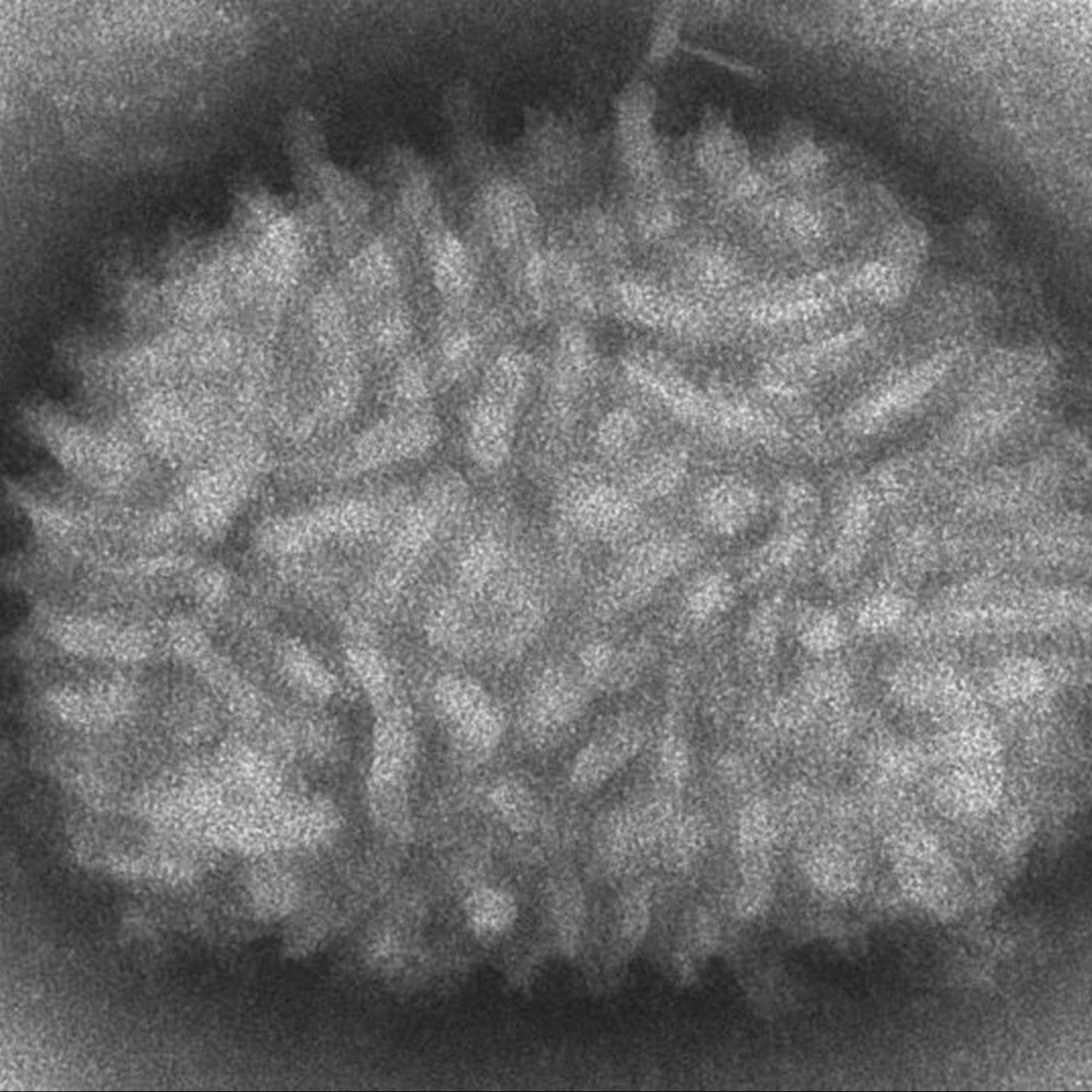
Get A Testing Quote
Vaccinia Virus
| Virus | Vaccinia virus |
| Structure | Enveloped |
| Genome | Double-stranded RNA virus |
| Family | Poxviridae |
| Primary Host | Human and Bovine |
| Disease(s) Caused | Smallpox |
| Symptoms | Pustular skin rash, Fever, Body Aches |
| Potential Complications |
Suppressed Immune System |
| Transmission Mode |
Contact with body fluid, in rare cases, may be spread through the air |
| Sites of Community Outbreaks |
Dairy farms, particularly those in South America |
Importance of Vaccinia Virus
Vaccinia virus is a highly attenuated version of the eradicated variola virus (smallpox). Despite the relatively benign nature of the vaccinia virus, some bovine populations and those that care for them may still be at risk of infection. In South America, the Bovine Vaccinia virus causes lesions on dairy cattle as well as those who milk infected cattle. Lesions on cattle may become infected further with opportunistic microbes, leading to papules and ulcers, damaging the udder, and reducing the productivity of the cow. In humans working closely with infected cattle, lesions on the hands, arms, and even face have been reported. The virus sheds into harvested milk and can remain in dairy products produced from a contaminated batch of milk. This has the potential to infect those who consume contaminated products.
The virus spreads easily in wild and farmed populations of cattle through direct and indirect contact with infected cows or other animals. Additionally, vaccinia virus may be spread by farmers in close contact with infected cattle. Workers who travel between farms may spread the virus to neighboring farms, allowing the virus to quickly propagate.
Importance of Disinfection
Disinfection of Vaccinia virus may protect human health and economically important animals like dairy cattle. As a large, enveloped virus, Vaccinia virus is quite susceptible to its environment. Disinfectants targeting the lipid capsid may be successful at inactivating the virus. A comparative study to determine the efficacy of various disinfectants found that at a concentration of 0.015%, a quaternary ammonium solution demonstrated at least a 4 log10 reduction at contact times of one minute, five minutes, and thirty minutes. Similarly, a disinfectant with a sodium hypochlorite active ingredient demonstrated at least a 4 log10 reduction at one minute, five minutes, and thirty minutes.
References
- Matos, Ana Carolina Diniz et al. “Bovine Vaccinia: Insights into the Disease in Cattle.” Viruses 10,3 120. 9 Mar. 2018, doi:10.3390/v10030120
- de Oliveira, Tércia Moreira Ludolfo et al. “Susceptibility of Vaccinia virus to chemical disinfectants.” The American journal of tropical medicine and hygiene 85,1 (2011): 152-7. doi:10.4269/ajtmh.2011.11-0144
- Image from: Source: https://phil.cdc.gov/details.aspx?pid=2143
Share

